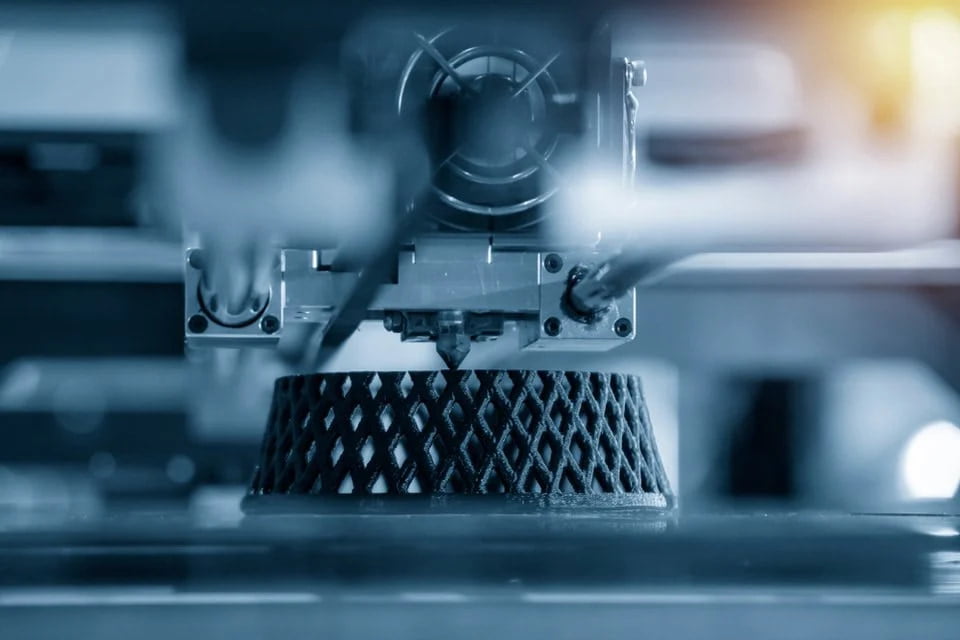
Polymer 3D Printing Review: Materials, Process, and Design Strategies for Medical Applications
3D printing is a growing and sophisticated set of technologies that furnish access to a huge universe of contemporary design structures that may incorporate materials of conflicting properties to optimal effect. Stereolithography is one of the principal technologies in this area, employing the UV curing of superimposed layers of epoxy or methacrylate resins. Inkjet or polyjet printing is a closely allied technique that also employs UV resin curing.
According to a review by Egan et. al., (Polymers, 2021, 13, 1499), several technologies have been developed under the stereolithography umbrella which include stereolithography with direct laser writing (SLA), digital light processing (DLP), continuous liquid interface production (CLIP) and continuous digital light manufacturing (CLDM). Among the most desirable characteristics associated with 3D-printed artefacts are toughness, flexibility, biocompatibility and conductivity.
Advantages of 3D Printing
This sophisticated technology paves the way to the production of structurally complex objects, to the mechanically intelligent, and to artefacts that can transform the quality of patient life. The sheer diversity of structures achievable through 3D printing is remarkable and can be summarised as follows: (a) architected materials such as lattice structures; (b) stimuli-responsive designs such as those working with shape memory or others that are thermally responsive; (c) multi-material printing capable of combining highly-contrasting material properties in one go; (d) functionally-graded structures that engineer gradient characteristics between different materials and performance attributes; and (e) customised designs.
Overview of Selected Applications
Architected materials that have multi-layer, highly-structured internal designs are now accessed more readily through 3D printing. Structures with stretch or bend-led properties that are ideal for medical applications can be produced in this way. Using a hierarchical approach to structural design has paved the way for tissue scaffolds; a lattice-like porosity assists with nutrient transportation in the body.
Multi-material printing offers routes to materials with novel performance characteristics through engineering or interspersing periodic properties throughout materials. Typical applications include biological tissue reproduction, changing the greater characteristics of plastics and printing with fibre-reinforced composites.
Customised designs are of huge benefit to the medical sector and 3D printing is optimally suited to this area as 2D medical images may be converted into 3D images and 3D models. Primary applications include bone tissue engineering based on such image conversions, leading to superior interfacing characteristics. Dental implants also benefit from the same type of customisation. Similarly, complex surgeries such as reconstructions can be planned with more precision by having 3D-printed models to hand.
Limitations and Challenges in 3D Printing
Future challenges in 3D printing are readily classified according to material, process and design. However, some dependency relationships exist between them.
- Material challenges have to be viewed in terms of the printing process chosen, an understanding of the application criteria and validation requirements in terms of performance and structural testing.
- Process challenges are viewed through the lens of efficiency (effectively a cost-benefit analysis) in terms of effort, attainability of results, performance and finish. Other key considerations are that 3D printing introduces new qualities to the cured materials and how to approach the construction of particularly complex geometries.
- Design criteria relate to both of the aforementioned categories in terms of understanding what can be achieved (process) and how performance objectives are fulfilled (material). Furthermore, personalisation is gaining ground and requires new methods for optimising appliances and prostheses etc. according to individual patient needs.
The particular strengths of stereolithography as a production process lie in the areas of attainable product resolution, high print speeds and a high quality of surface finish, especially when compared to the other 3D printing techniques available. But a challenge yet to be addressed in stereolithography is that it lacks multi-material printability. Inkjet or polyjet printing presents the opportunity to access multi-material designs but requires the materials to have shear-thinning properties – another limitation. Its strengths also include rapid fabrication of large sets of structures that can be customised for medical or safety purposes.
Potential Future 3D Printing Topics
One research aspect that is significant in stereolithography is understanding the relationships between finished material performance and cure time and post-curing processes, for example, how mechanical properties such as elastic modulus vary with degree of conversion. Similarly, understanding when complete conversion itself has been effected is crucial for applications such as medical implants, lest residual toxic oligomers be unintentionally introduced into the human body. In this same area, inkjet printing techniques that have already been employed for the production of biomedical devices require further research for tissue engineering applications to develop structures of superior cellular compatibility.
Ultimately, another aspect of advancing future 3D printing design strategies will probably reside in computational modelling that holistically considers all three of these aspects. This will be especially significant in progressing 3D printing for medical applications where there are often trade-offs to be found in balancing material selection and performance.